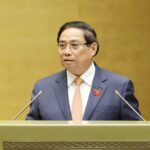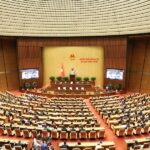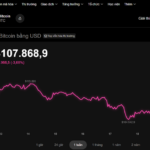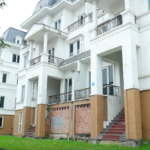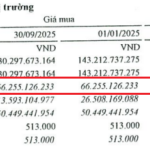On the morning of October 20, Prime Minister Pham Minh Chinh reported to the National Assembly on the implementation results of the socio-economic development plan for 2025 and the 5-year period 2021-2025, along with the proposed development plan for 2026.
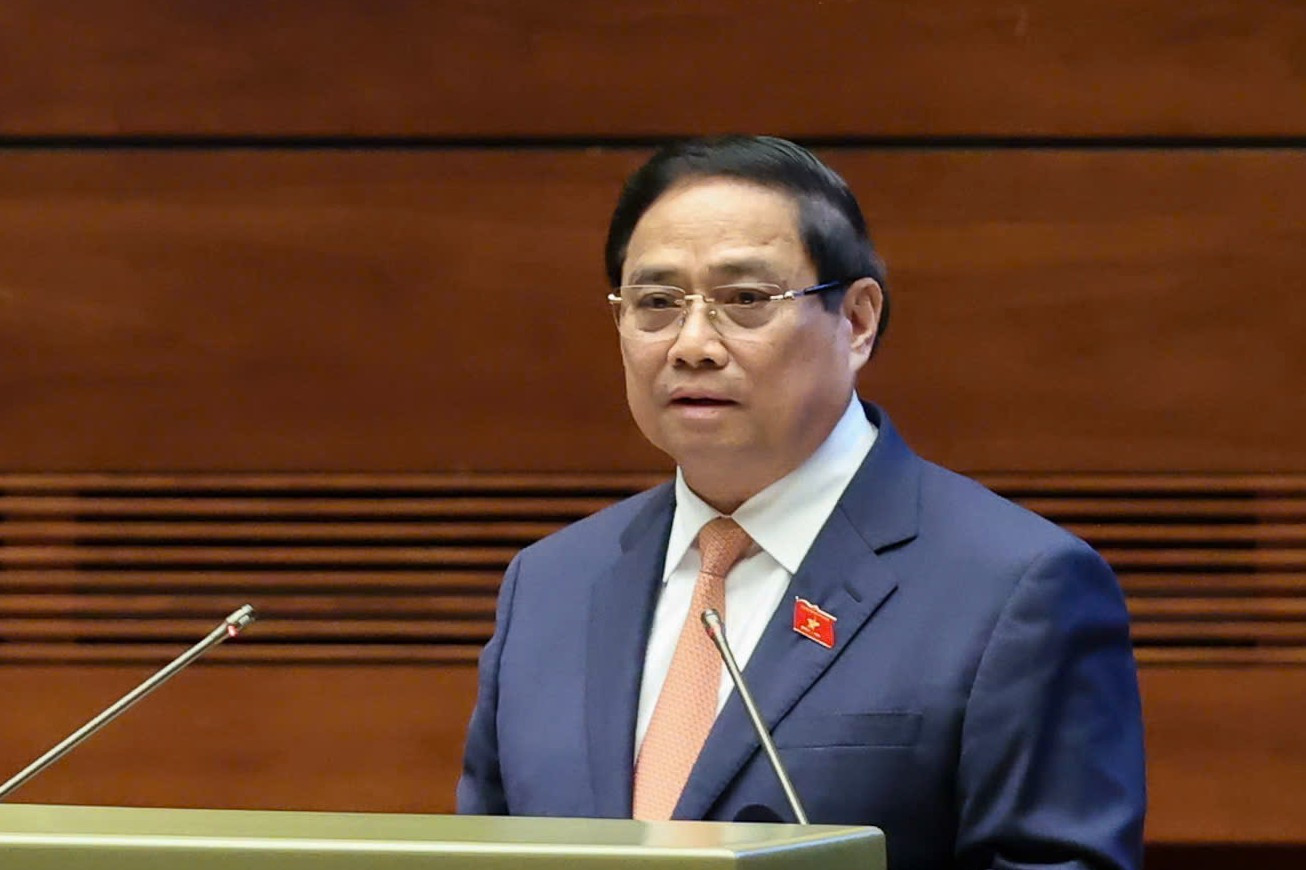
Vietnam Joins Upper-Middle-Income Group
According to the Prime Minister, over the past five years, despite numerous complex and unpredictable challenges, particularly the severe impacts of the COVID-19 pandemic, Vietnam has achieved and surpassed 22 out of 26 socio-economic targets with unwavering determination, significant efforts, and decisive actions.
The economy’s scale has expanded from $346 billion in 2020 to $510 billion, ranking 32nd globally. The per capita GDP is estimated at approximately $5,000, 1.4 times higher than in 2020, propelling Vietnam into the upper-middle-income group.
State budget revenue is projected to reach 9.6 trillion VND, 1.36 times higher than the previous term and significantly exceeding the target of 8.3 trillion VND. This includes tax exemptions, reductions, and deferrals totaling around 1.1 trillion VND, along with revenue increases and cost savings of 1.57 trillion VND.
Regarding infrastructure development, the Prime Minister highlighted significant breakthroughs. By the end of 2025, Vietnam is expected to complete 3,245 km of expressways and 1,711 km of coastal roads. Many long-delayed projects have been resolved, put into operation, and revitalized, unlocking resources worth hundreds of trillions of VND.
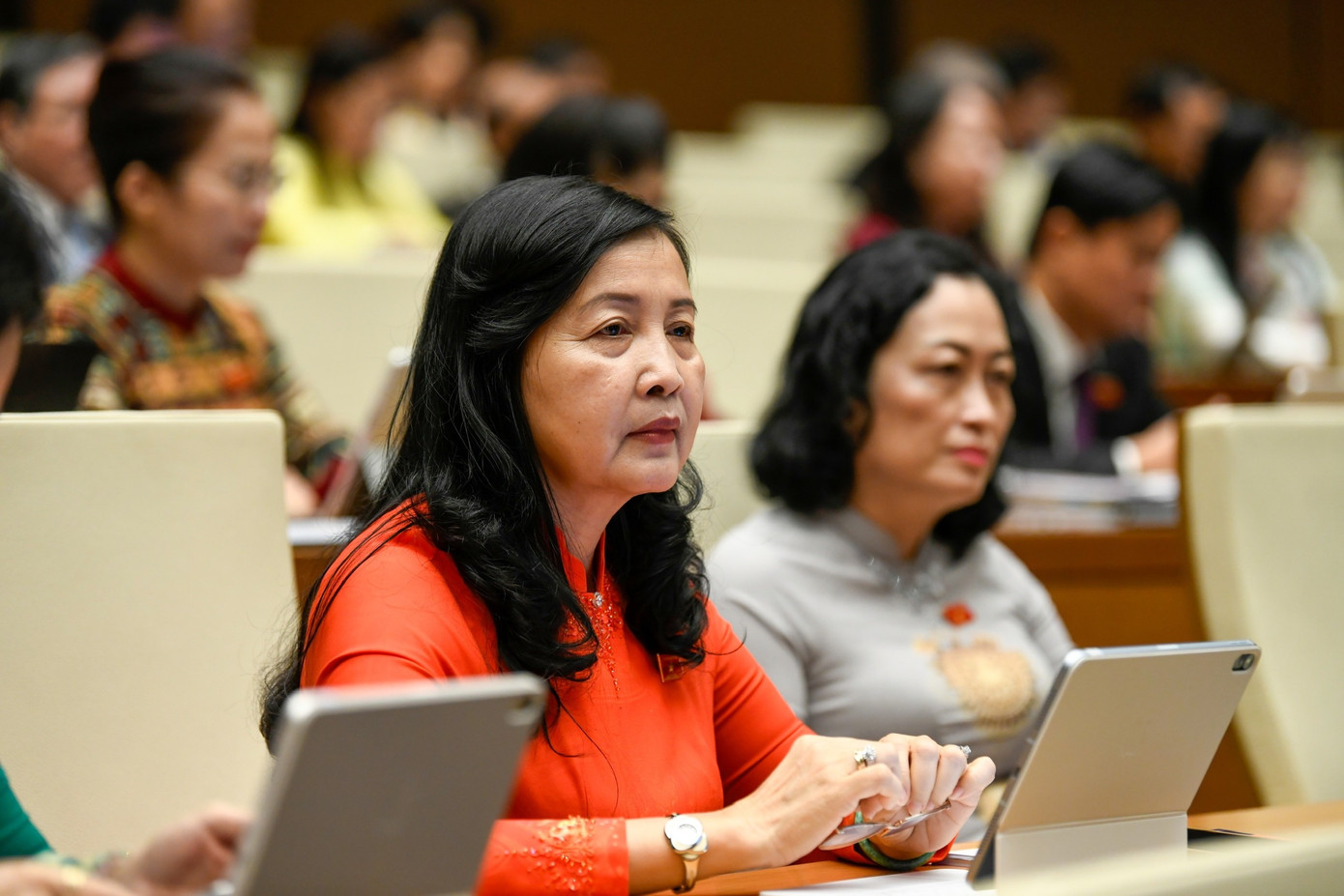
“The Government is directing the review, classification, and proposal for authorities to continue handling nearly 3,000 projects of various types with total capital in the trillions of VND and land use scale of hundreds of thousands of hectares,” stated Prime Minister Pham Minh Chinh.
Additionally, the Government has effectively implemented the restructuring and streamlining of the apparatus, coupled with enhanced decentralization and delegation of powers. As a result, the administrative staff has been reduced by 145,000, and regular expenditures have decreased by 39 trillion VND annually. Local government operations at two levels are gradually becoming more systematic.
Despite these achievements, the Prime Minister candidly pointed out several limitations and challenges, such as the complex dynamics in the real estate, gold, and bond markets. Production and business activities in certain sectors remain difficult.
Science, technology, innovation, and digital transformation have yet to become the primary drivers of growth. Environmental pollution, traffic congestion, flooding, subsidence, and landslides in major cities and mountainous areas have not been effectively addressed.
In 2026, Per Capita GDP to Reach $5,400 – $5,500
For the 2026 socio-economic development plan, the Government has set a target GDP growth rate of 10% or higher, with per capita GDP reaching $5,400 – $5,500.
To achieve these goals, the Prime Minister emphasized prioritizing growth while maintaining macroeconomic stability and controlling inflation. Efforts will be made to reduce lending interest rates, focus credit on production and business activities, and effectively manage the gold, corporate bond, and real estate markets.
The Government will also concentrate on implementing solutions to promote digital economy, green economy, circular economy, sharing economy, semiconductor industry, artificial intelligence, and more. Mechanisms for controlled testing of new business models will be developed and improved.
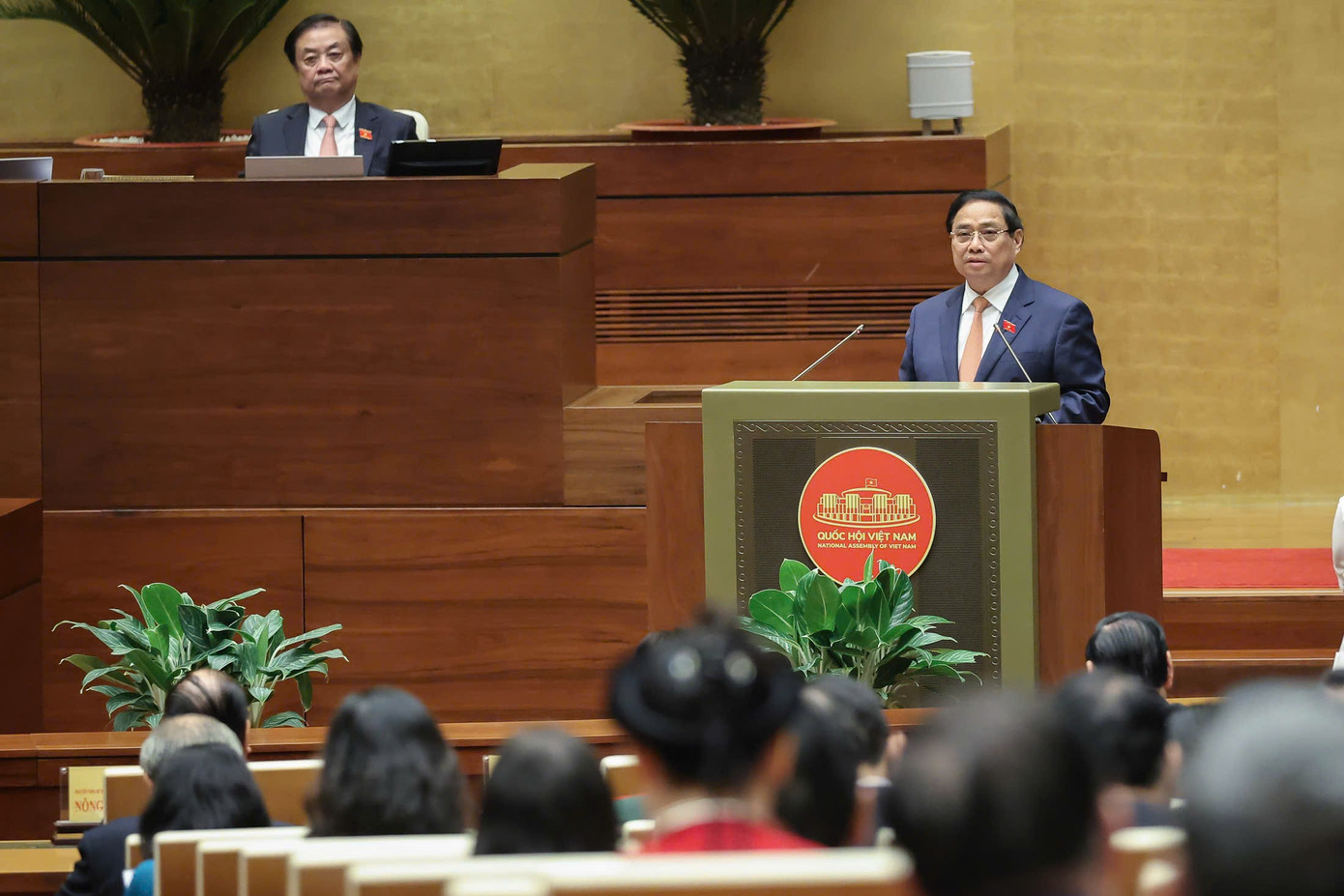
Effective pilot programs for the cryptocurrency asset market will be rolled out, along with efforts to establish a data market. The development of international financial centers in Ho Chi Minh City, Da Nang, and new-generation free trade zones in select localities will be accelerated. Policies for the development of special economic zones in Van Don, Van Phong, and Phu Quoc will be finalized.
Notably, the Prime Minister stressed the commitment to, by 2026, eliminate 100% of unnecessary business conditions and reduce compliance time and costs for administrative procedures by 50% compared to 2024.
Regarding strategic infrastructure development, the Prime Minister outlined plans to expedite the implementation of the Lao Cai – Hanoi – Hai Phong railway line, railway connections with China, and urban railway projects in Hanoi and Ho Chi Minh City. Efforts will be made to commence construction of the North-South high-speed railway in 2026.
Additionally, focus will be placed on Phase 2 of Long Thanh International Airport, road connections to Tan Son Nhat Airport, and ensuring progress on Gia Binh International Airport. Expansion projects for Phu Quoc, Chu Lai, Phu Cat, Ca Mau, and Tho Chu airports, as well as the Can Gio, Lien Chieu, and Hon Khoai international transshipment ports, will be prioritized.
For 2026, the Government has proposed 15 socio-economic development targets, including a GDP growth rate of 10% or higher, per capita GDP of $5,400 – $5,500, an average CPI increase of around 4.5%, an average labor productivity growth of approximately 8%, and a reduction in the poverty rate by 1 – 1.5% according to multidimensional poverty standards.
Prime Minister: Vietnam’s Per Capita GDP Projected to Reach $5,400–$5,500 by 2026
In presenting the projected socio-economic development plan for 2026, Prime Minister Phạm Minh Chính outlined ambitious targets: a GDP growth rate of 10% or higher, per capita GDP reaching $5,400–$5,500, and an average CPI increase of around 4.5%. These goals are supported by ten key task groups and primary solutions.
Unveiling the Rising Real Estate Tycoon Quietly Partnering with Vinhomes, Ecopark, and Phú Mỹ in Billion-Dollar Projects
Recently, Nomura Real Estate Development has been quietly expanding its presence in Vietnam through a series of notable projects, including Ecopark, Vinhomes Grand Park, Vinhomes Royal Island, and Hồng Hạc City.


























